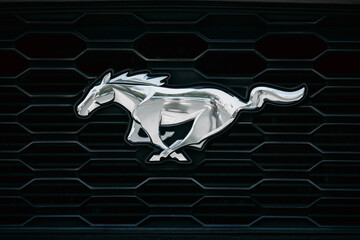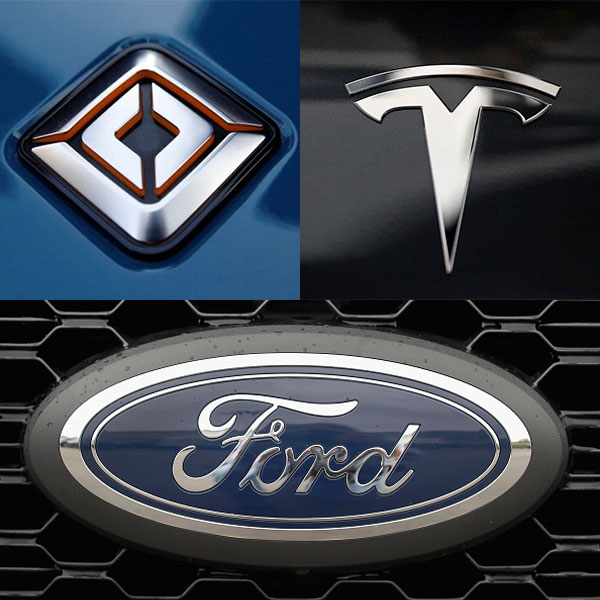Tag: Rivian R1T
It’s Time for a Real Mustang EV
 The resounding box office success of Top Gun: Maverick, in which Tom Cruise reprises his role as fighter pilot Pete “Maverick” Mitchell, is the most recent example of America’s love of nostalgia. Despite the nearly forty year interval between the two films, diehard fans of the original Top Gun and new filmgoers alike were enticed to return to the big screen.
The resounding box office success of Top Gun: Maverick, in which Tom Cruise reprises his role as fighter pilot Pete “Maverick” Mitchell, is the most recent example of America’s love of nostalgia. Despite the nearly forty year interval between the two films, diehard fans of the original Top Gun and new filmgoers alike were enticed to return to the big screen.
The Ford Motor Company has a similar opportunity to revisit the phenomenal success of the original Mustang, a two-door sports car that sold over one million units in its first two years. Named after the World War II fighter plane, and launched at the New York World’s Fair in 1964, what came to be known as the “pony car” combined the best of European styling and American ingenuity. In the new age of EVs, Ford has launched the Mustang Mach-E SUV, which carries the Mustang moniker, but, let’s face it, in no way resembles the original.
To be sure, Ford has taken strong steps to electrify its product line, as evidenced by MotorTrend’s recent unanimous selection of the Ford F-150 Lightning as Truck of the Year for 2023. But why not create a real Mustang EV, similar in body design to the one that captured the imagination of a generation of car-buyers. An authentic looking and performing Mustang would give Ford the chance to create a “two-horse” race with Tesla, whose Model 3 is the early leader in the EV passenger car category. By doing so, Ford would be making a statement that it will not cede this all-important segment as the world shifts from combustion engines to electric motors.
Rather than compete solely on the basis of safety features and battery range, Ford could bring back the original pony interior, with its alluring three-dimensional image of horses in flight. Rivian Automotive has made a minor splash in the pickup truck world with its vegan leather interior, an obvious appeal to the environmentally conscious. With vinyl records making a comeback, Ford could bring back the original vinyl interior of the Mustang, or perhaps an engineered material which does not bake or crack in the sun? And as much as many of us enjoy the utter silence of an EV motor, Ford could embed a device that simulates the growl of the Mustang engine, an option for traditional automotive enthusiasts.
And who knows? An EV incarnation of the original Mustang might be even more successful than the original. After all, the new Top Gun: Maverick achieved a 96 percent approval rating on Rotten Tomatoes, while its predecessor tallied a mere 58 percent. So too does Ford have the opportunity to create an even more popular Mustang that would reach a wider audience in a new era of consumer transportation.
Competition Heating Up in Pickup Trucks
 Rivian established a first mover advantage in the electric pickup truck market when it launched the R1T in 2021. Having won the coveted Motor Trend Truck of the Year award for 2022, Rivian, we believe, held the market share lead in EV pickup trucks as of the end of 2022.
Rivian established a first mover advantage in the electric pickup truck market when it launched the R1T in 2021. Having won the coveted Motor Trend Truck of the Year award for 2022, Rivian, we believe, held the market share lead in EV pickup trucks as of the end of 2022.
Fresh on the heels of having won the Motor Trend Truck of the Year for 2023, Ford announced on January 5th that it has sold 15,617 F-150 Lightning trucks since the vehicle was unveiled to customers in May of last year. Ford has not so quietly been claiming that in each of the last two months it has sold more EV pickups than any other manufacturer.
By the end of Q1 2023, it is likely that Ford will pass Rivian to become the overall leader in electric pickup sales in the United States. This is not necessarily surprising, as Ford’s classic F-150 has been the best-selling truck in the United States for 46 consecutive years. Importantly, Ford offers the F-150 in multiple model variants that range in price from $40K to $90K. And Ford has many years of brand equity from which to draw. Moreover, while both Rivian and Ford are relatively inexperienced at building EVs, Ford has a demonstrated ability to produce vehicles in large volumes—something that Rivian has struggled with.
Another headwind facing Rivian is the inevitable launch of Tesla’s Cybertruck. To be clear, the Cybertruck is way behind schedule, relative to original estimates provided by Tesla, but it now appears that limited production will begin this summer. Rather than go head-to-head against Rivian and Ford in the market for conventional-looking EV pickup trucks, Tesla is taking a risk with a unique body style that is sure to electrify some, yet conceivably turn-off others. The angular, space-age body of the Cybertruck is equipped to handle any type of terrain, will supposedly feature a bullet-proof body, and will be manufactured with a unique mix of light-weight aluminum and ultra-hard 30x cold-rolled stainless steel.
From what we can gather, fly-over drone footage available over the Internet of Tesla’s Gigafactory in Texas revealed the recent delivery of at least part of a 9,000-ton Giga Press, which will be used to cast aluminum parts in the first production run. Elon Musk has said the Cybertruck, when available, will be the car he drives to work in Austin. The Cybertruck has the potential to put a freeze on the electric pickup truck market, as consumers will be curious to learn more about it before purchasing a rival vehicle. This is especially true for prospective Rivian buyers who desire an elite luxury pickup truck. While a case can be made that the R1T and Cybertruck may ultimately appeal to different buyers, it is likely that consumers who are interested in the R1T would also consider the Cybertruck for similar reasons. Could this be part of the reason why Rivian stopped disclosing its backlog?

